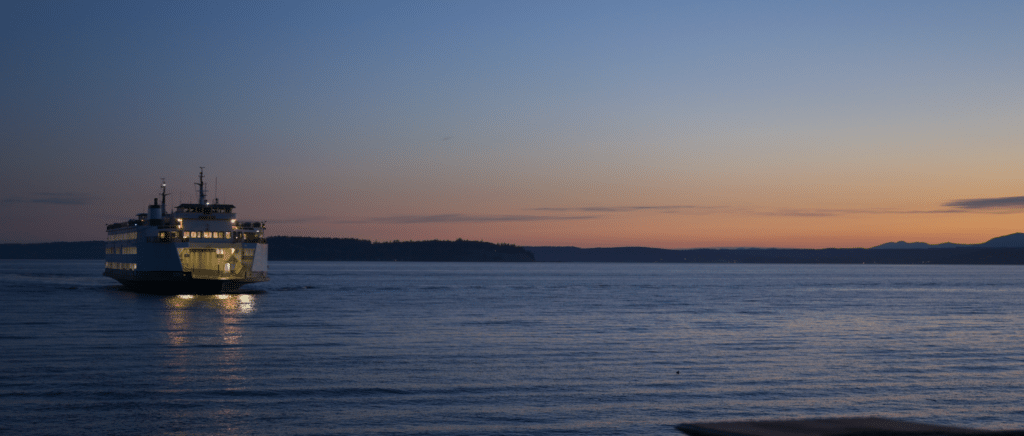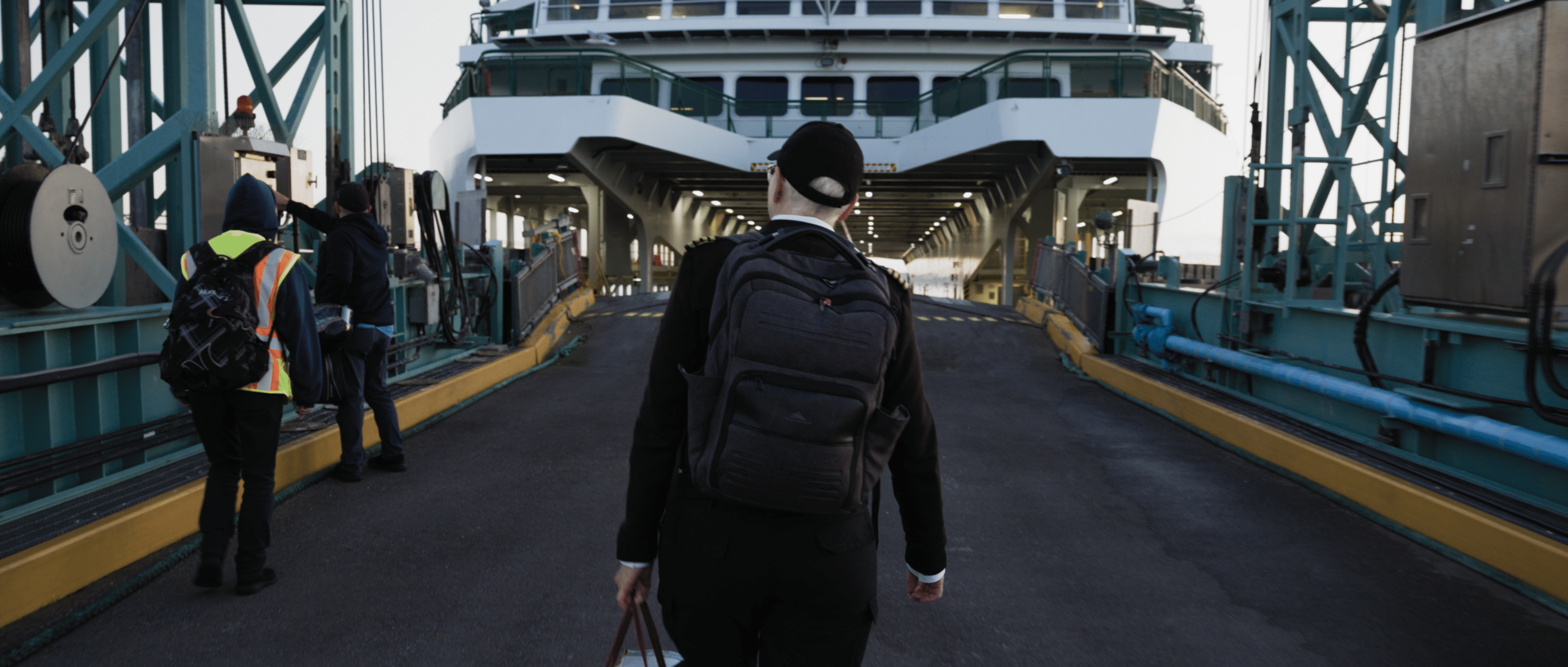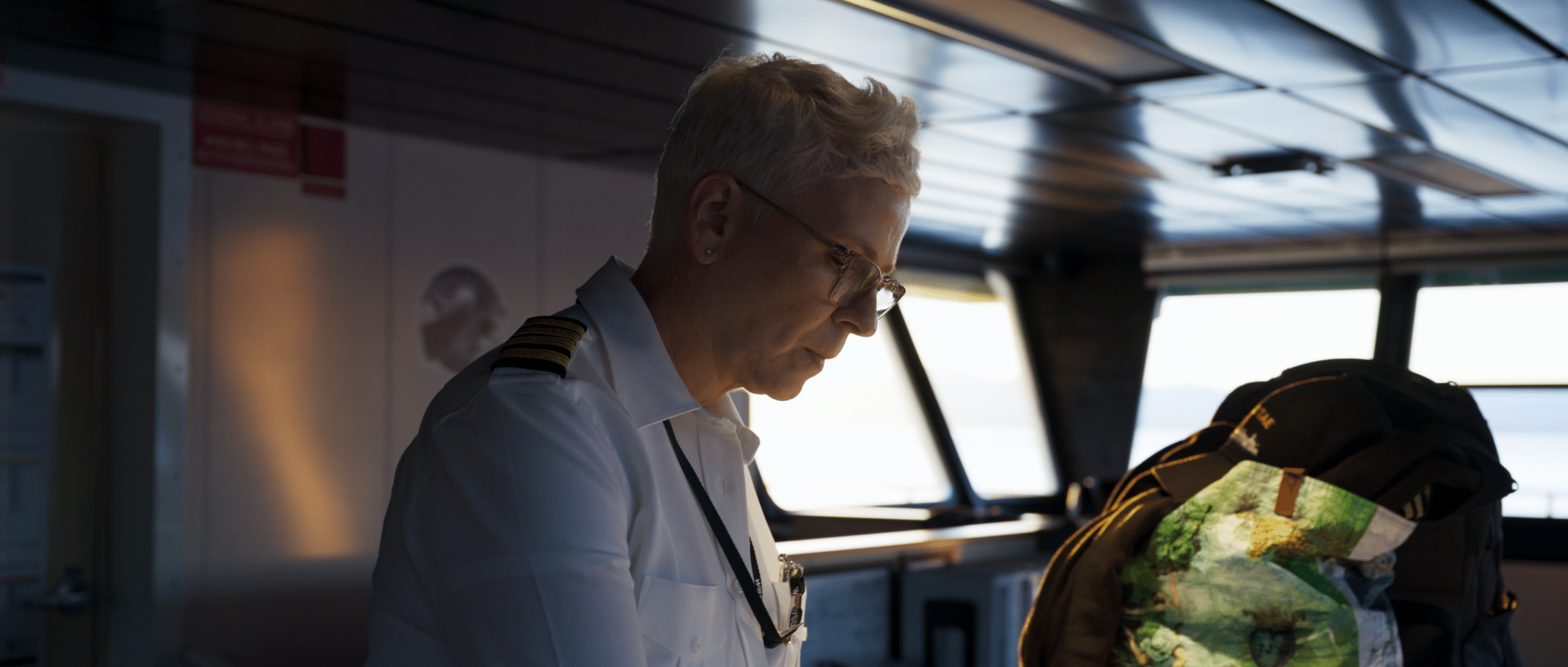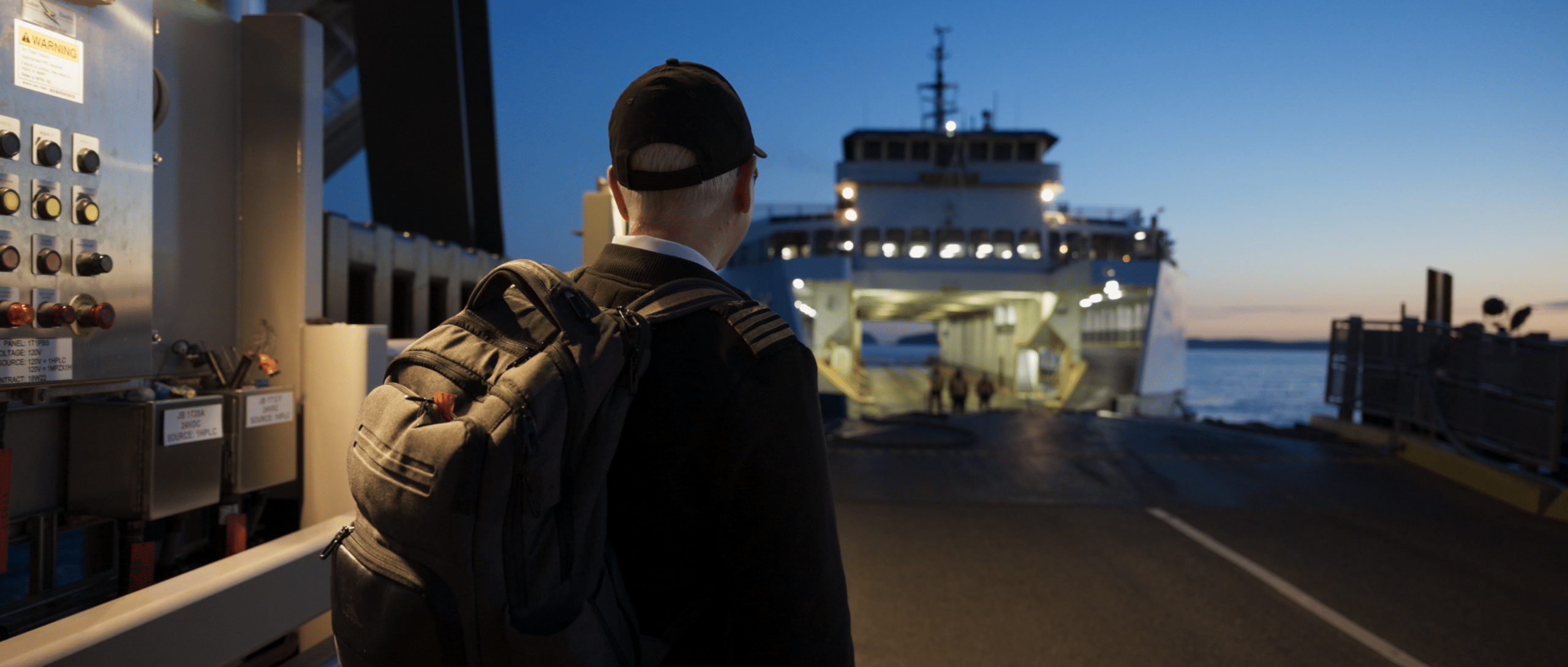Meet Genevieve Fritschen—relief captain for the Washington State Ferries—and explore Washington’s most unique commute with this interview.
Can you tell us your name and your title?
Genevieve: My name is Genevieve Fritschen, and I’m a relief captain for the Washington State Ferries.
What makes Washington State Ferries different from other states’ ferries?
Genevieve: We’re the biggest ferry system in the United States and one of the biggest car-carrier ferry systems in the world. [Tens of millions of] people ride these boats every year. That’s a lot. And most people, when they come to western Washington, one of the things they do is take a ferry ride.
It’s an icon for Washington state. Any time you see a Seahawks game—when they pan out for a commercial break—what do you see? Washington State ferries coming into Elliott Bay.
It’s iconic. All of the ferries are named after something culturally significant in our region and, if you walk around a ferry, you’ll see educational pictures of what the ferry is named after or the Tribe it might be named after. It’s really interesting to see all those historical pictures hanging up in the cabin, [and] it’s pretty neat to be connected to the region’s heritage.
What is the significance of the ferry system to Washington State?
Genevieve: Washington State Ferries started in 1951 and ever since then, we’ve just gotten bigger and carried more and more people. It’s a lifeline for a lot of the communities we serve. We transport a lot of goods and services [to] the islands, like Whidbey Island. There are a lot of logging trucks that we take back and forth. There are days where there are ten UPS trucks on the ferry. For the San Juan Islands, we take groceries, fuel, and passengers—tourists and commuters. And at any given time, some 2,000 people will be riding the Bainbridge boat going to work or to school.
The ferries offer the best commute ever—who wouldn’t rather be on a ferry for half an hour than be on the highway for an hour and a half? You can get out of your car, come upon deck, have a cup of coffee, enjoy the view, look at the marine life. And it’s a multimodal transportation system, so when our ferry pulls in, it connects right to a train or a bus. It also makes it a lot more environmentally friendly, hopefully.
I can’t even imagine Puget Sound without the ferries.
What sparked your interest in pursuing a career in the maritime industry, and specifically as a captain in the Washington state?
Genevieve: I like to think of myself as an accidental sailor. I never meant to do this for a living, but once I started to do it, I got drawn in. It’s very hard to leave this workplace. The view from my office is beautiful, and every day is something different.
Things were a lot different when I first got started in this maritime industry. In the mid-80s, it was uncommon for women to work in the pilot house. So, it’s been an interesting journey. I have to say it’s gotten better and better over the years—more diverse and more inclusive—and it’s made it easier for women to work in this industry.
I encourage everybody to come and work on the water. You will never go back.
Can you share any memorable or notable experiences you’ve had while working as a captain?
Genevieve: One day I was walking on the overhead [raised boarding platform] in Edmonds to the vessel, and I was following a sight-impaired passenger with his assistant escorting him. And his assistant was describing everything he saw as the ferry was landing. He was telling him, ‘The ferry’s coming,’ and ‘Oh, [there is] white water coming from the bow of the vessel,’ ‘Oh, now it’s landed, the deckhands are grabbing the lines,’ ‘All the cars are starting to roll off,’ ‘I see an eagle overhead.’
He was describing in detail everything he saw. I’m not kidding, it almost made me tear up. It made me think of the ferries in such a different light than I had been doing.
Sometimes, we get complacent with how beautiful an area we work in and what we do for a living. It becomes routine. But then, when something like that happens, I almost got emotional. I’m very proud of what I do, especially after hearing how other people see what we do.
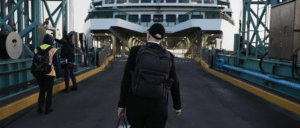
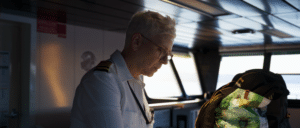
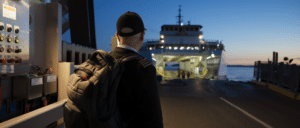
Do you think there’s a common trait shared throughout the Maritime Washington National Heritage Area?
Genevieve: We’re all interconnected by this body of water. I think of, gosh, all of the tributaries and the bays and the sounds and everything that connects western Washington, the San Juan Islands, the Strait of Juan de Fuca, all of the communities up and down. It’s amazing.
Sometimes I wake up myself and look at what I do for a living and can’t believe it. I’m like, I have to pinch myself that I do this because people come from around the world to look at the place that we’re blessed to live in. I’m very proud of it and proud to be a part of this project.
What do visitors experience when they take the ferry in Washington? What can new riders look forward to?
Genevieve: The first thing is to get out of your car and go up to the [deck]. You feel that wind in your face, and you smell the fresh sea breeze—there’s nothing better than that. And then if you’re lucky, you will see a pod of orcas, which we see quite frequently. Or you’ll see other marine sea life, or eagles flying overhead, or all the little sailboats.
I sometimes think like I’m in Norway or something—it looks like that going through the fjords. Sometimes I think, my God, it’s like we’re in Europe, but we’re not. We’re better. We’re in western Washington, and we have it right here in our own backyard.
If you liked this interview, check out our other “This Is Maritime Washington” videos.
To learn more about Washington State Ferries, please visit their website where you can find information about schedules, tickets, terminals, and more.
